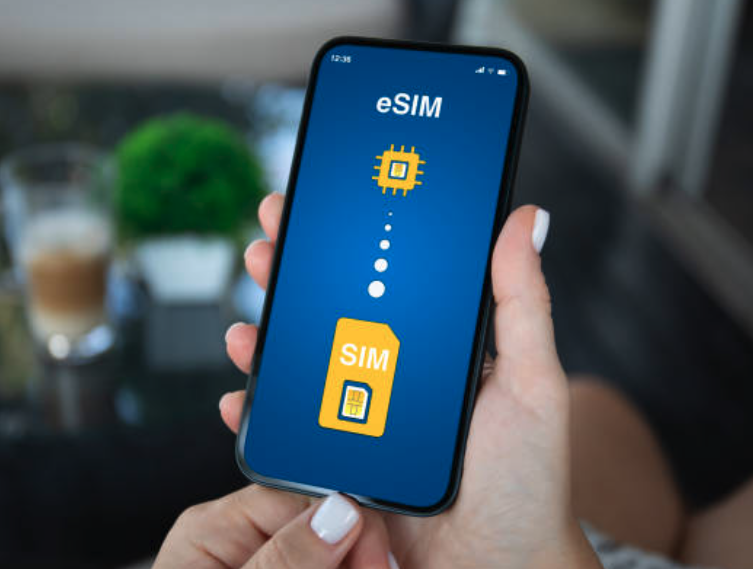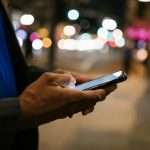As technology continues to evolve at a rapid pace, the way we connect to the world around us is undergoing a significant transformation. Enter the eSIM, a revolutionary advancement in mobile technology that eliminates the need for physical SIM cards, offering flexibility and convenience for today’s on-the-go lifestyle. Whether you’re traveling internationally, switching carriers, or simply looking to streamline your mobile experience, eSIMs provide a seamless solution. In this ultimate guide, we will walk you through everything you need to know about buying and installing an eSIM on your phone. From understanding the benefits and features of eSIM technology to step-by-step instructions for activation, you’ll be fully equipped to unlock the future of connectivity right from your device. Get ready to dive into a world where managing your mobile service is easier than ever!
1. What is eSIM and How Does It Work?
eSIM, or embedded SIM, is a revolutionary technology that marks a significant advancement in mobile connectivity. Unlike traditional SIM cards, which are physical cards that you insert into your phone, eSIMs are built directly into the device’s circuitry. This means that instead of swapping out SIM cards for different carriers or plans, you can switch your mobile service digitally, making the process more seamless and efficient.
The functionality of eSIM revolves around a digital profile that can be remotely activated or deactivated. This profile contains all the information necessary to connect to a mobile network, much like a traditional SIM card. When you decide to switch carriers or plans, instead of going through the hassle of purchasing a new SIM card, you simply download a new eSIM profile provided by your carrier. This process typically involves scanning a QR code or entering an activation code, which unlocks the new service on your device.
eSIM technology not only simplifies the process of managing mobile plans but also enhances the overall user experience. It allows for multiple profiles to be stored on a single device, making it an ideal solution for frequent travelers who may need to switch between different networks based on their location. Furthermore, eSIMs contribute to slimmer device designs, as the absence of a physical SIM card slot creates additional space for other technological advancements.
In essence, eSIM represents a shift towards a more flexible and efficient mobile experience, offering users greater control over their connectivity options without the limitations of traditional SIM cards. As you consider making the switch to eSIM, understanding its advantages and functionality can unlock a new world of possibilities for your mobile device usage.
2. Benefits of Using eSIM Technology
Embracing eSIM technology opens the door to a myriad of benefits that enhance the mobile experience and streamline connectivity. One of the most significant advantages is the convenience it offers. With eSIM, there’s no need for a physical SIM card, which means you can switch carriers or plans without the hassle of inserting or removing cards. This is particularly useful for frequent travelers who can easily activate local data plans on-the-go, avoiding exorbitant roaming charges and ensuring reliable connectivity wherever they are.
Another compelling benefit is the ability to manage multiple numbers on a single device. eSIM technology allows users to have more than one mobile plan, enabling you to seamlessly separate work and personal lines without the clutter of multiple devices. This feature is especially advantageous for business professionals who need to stay connected while keeping their personal and professional communications distinct.
Additionally, eSIMs are more environmentally friendly. By eliminating the need for physical SIM cards, eSIMs significantly reduce plastic waste and the carbon footprint associated with the production and distribution of traditional SIM cards. This small change contributes to a more sustainable future, aligning with the growing preference for eco-conscious practices.
Moreover, eSIMs often provide improved security features. They are embedded directly into the device, making it harder for thieves to steal or swap out your SIM, thus enhancing your phone’s security. You can also secure your eSIM with advanced authentication methods, adding another layer of protection to your personal data.
Finally, eSIM technology is paving the way for more advanced mobile services and innovations. As connectivity continues to evolve, adopting eSIM not only future-proofs your device but also positions you to take advantage of emerging technologies that rely on seamless, always-on connectivity. Whether it’s IoT devices, smart wearables, or enhanced mobile applications, eSIMs are set to play a crucial role in the next generation of mobile technology.
In summary, adopting eSIM technology is not just about keeping up with trends; it’s about experiencing enhanced convenience, flexibility, security, and sustainability in your mobile life. As you consider making the switch, the benefits of eSIMs highlight a smarter, more efficient way to stay connected in our ever-evolving digital landscape.
3. Compatibility: Which Phones Support eSIM?
As the world moves towards more advanced technology, eSIMs have emerged as a convenient and efficient alternative to traditional physical SIM cards. However, before you dive into the process of buying and installing an eSIM, it’s crucial to ensure that your phone supports this innovative feature. Not all devices are created equal when it comes to eSIM compatibility, so knowing whether your smartphone can utilize this technology will save you time and frustration.
Currently, many of the latest flagship models from major manufacturers support eSIM functionality. For instance, Apple has integrated eSIM capability into their iPhone models starting from the iPhone XS, XS Max, and XR, continuing through to the latest iterations. If you own an Android device, you’ll be pleased to know that several models from brands like Google, Samsung, and Motorola also come equipped with eSIM capabilities. Popular choices include the Google Pixel 3 and newer models, Samsung Galaxy S20 and S21 series, and select Motorola smartphones.
To confirm your device’s compatibility, it’s best to check the specifications on the manufacturer’s website or consult your user manual. Additionally, some mobile carriers may also provide guidance on which devices are eligible for eSIM activation. Remember, even if your phone supports eSIM, it’s essential to ensure that your carrier offers eSIM services, as availability can vary by region and provider.
In summary, before you take the plunge into the world of eSIM technology, make sure that your phone is compatible. By doing so, you’ll be well on your way to enjoying the convenience of managing multiple numbers and plans directly from your device without the need for physical SIM cards.
4. How to Buy an eSIM
Buying an eSIM is becoming an increasingly straightforward process, and it opens up a world of convenience and flexibility for mobile users. To start your journey, the first step is to check if your smartphone is eSIM-compatible. Most modern smartphones, including recent models from Apple, Samsung, and Google, support eSIM technology, but it’s always a good idea to verify your device’s specifications.
Once you’re sure your phone is compatible, the next step is to choose a mobile carrier that offers eSIM services. Many major carriers now provide eSIM options, so visit their websites or contact their customer service to explore available plans. Make sure to compare different providers to find the one that offers the best coverage, pricing, and features that suit your needs.
After selecting a carrier, purchasing the eSIM is typically a straightforward process. You may be able to buy it directly from the carrier’s website or app, where you’ll receive a QR code or activation code that you’ll need later. Some carriers also allow you to visit a physical store if you prefer face-to-face assistance. Make sure to have your identification documents handy, as some providers may require proof of identity during the purchase.
Once you’ve acquired your eSIM, the activation process usually involves scanning the QR code provided by your carrier through your phone’s settings. This will link the eSIM to your device, allowing you to start enjoying the benefits of a digital SIM card—such as the ability to switch carriers easily, manage multiple numbers, or travel without needing to swap physical SIM cards.
In summary, buying an eSIM is a simple process that begins with ensuring compatibility and ends with activation through your chosen carrier. Embracing eSIM technology not only streamlines your mobile experience but also prepares you for a future where flexibility in connectivity is key.









